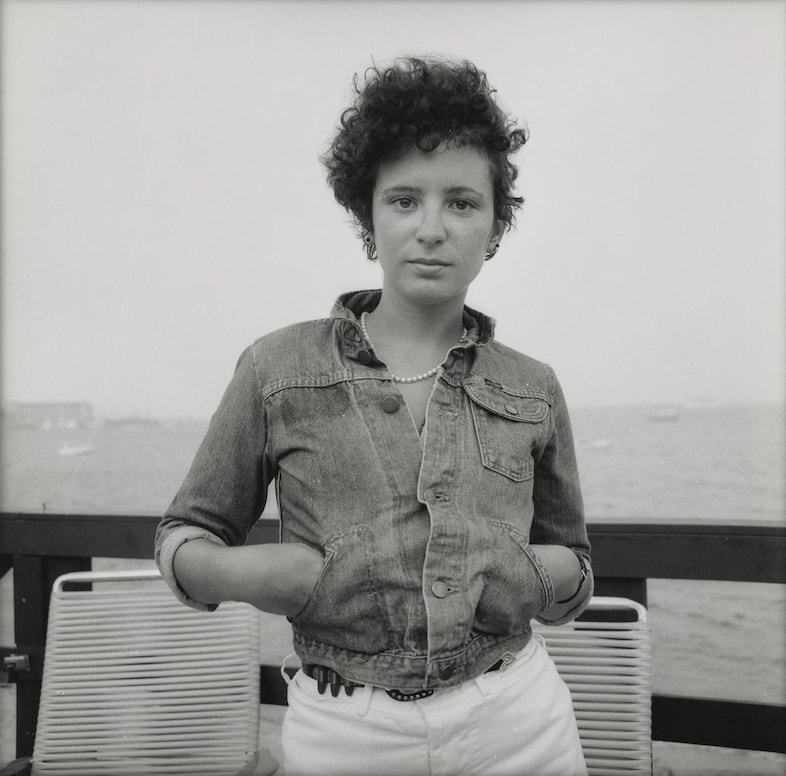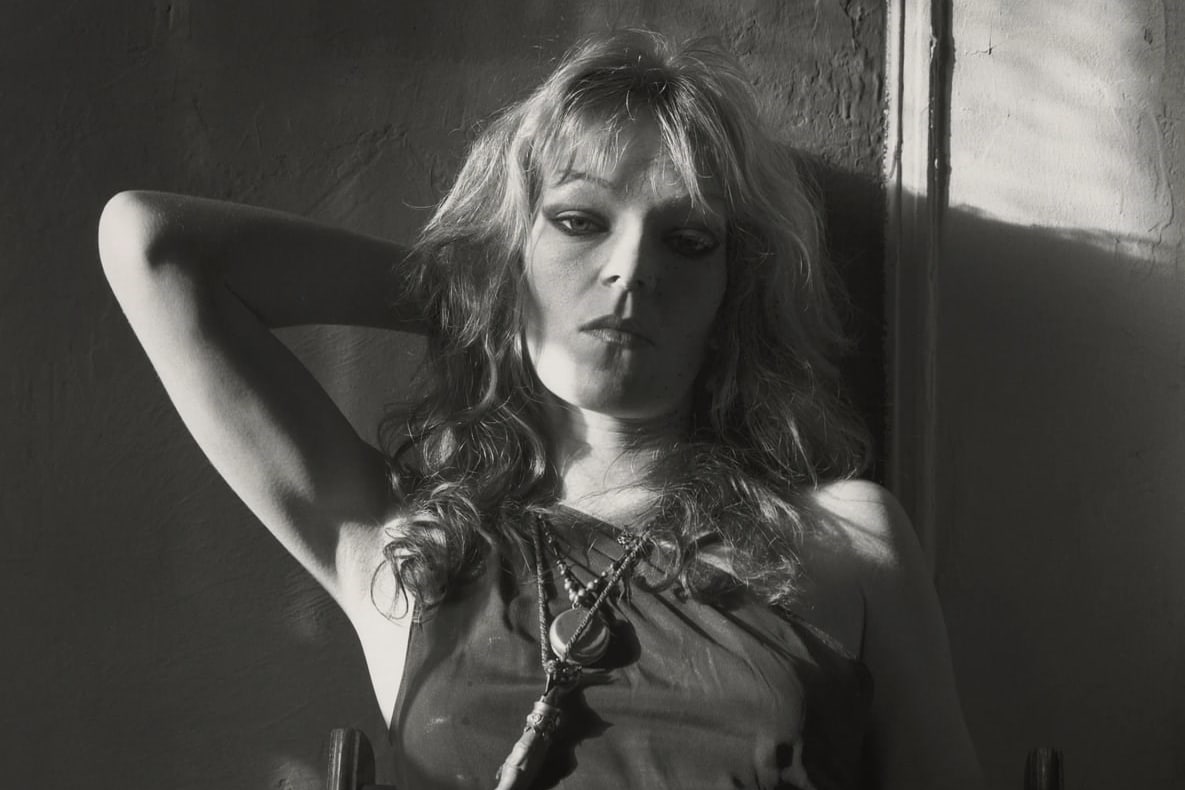A young man in a pale shirt, arms crossed, expression pensive, gazes downwards – and somehow inwards – against an empty wall. Sunlight illuminates his figure from the top left-hand corner, lending a soft chiaroscuro to the monochrome portrait. Nearby, a baby-faced Nan Goldin stares candidly at the camera, curly hair ruffled by the ocean wind, hands tucked into her jacket pockets. These two works are among a curation of captivating black-and-white portraits that greet visitors as they enter the newly opened retrospective of the late American photographer David Armstrong at Luma in Arles, coinciding with this year’s Rencontres d’Arles photography festival. They are emblematic of Armstrong’s oeuvre: delicate yet raw, intimate yet exquisitely composed, an encapsulation of the youthful beauty, rebellion and introspection of his generation.
Armstrong was born in Arlington, Massachusetts, in 1954. An early encounter with Nan Goldin at the age of 14 would prove formative for both artists, who became lifelong friends. Both numbered among the so-called Boston School of photographers, alongside Philip-Lorca diCorcia, Mark Morrisroe et al, and both relocated to New York’s Lower East Side in the late 1970s, where they became part of a unique scene, aptly described in the exhibition’s text as “a refuge for the dispossessed, for artists, poets, musicians and misfits of all kinds”. This world – a world of drug-fuelled hedonism, of sexual freedom and gender fluidity – would form the basis of both artists’ work over the following years. Yet Armstrong never received the same acclaim as Goldin in his lifetime, in spite of a number of important exhibitions – including one at the Rencontres d’Arles in 2009, the year that Goldin served as guest artistic director – and late success as a fashion photographer in the years preceding his death in 2014.
 David Armstrong,, David Armstrong Archive, “Nan, Provincetown” (Late 1970s)
David Armstrong,, David Armstrong Archive, “Nan, Provincetown” (Late 1970s)
Vintage Gelatin Silver Print
24 x 20 inCourtesy of the Estate of David Armstrong
“Goldin’s work is very immediate; at times it’s as if the camera doesn’t exist, which is what made it so shocking, so notable at the time,” explains Matthieu Humery, who co-curated the Luma show alongside the artist Wade Guyton, a friend of Armstrong’s who runs the photographer’s archive. Armstrong, on the other hand, took a more painterly approach, Humery says. “He actually studied painting first and was very into art history. He didn’t do a huge amount of preparation for his photographs, but these aren’t snapshots taken right away. He always took the time to compose the scene.” It is this, the curator suggests, that upon first glance gives the work a more classical appearance – “perhaps that’s why it drew less attention at the time.”
When you look closer, however, Armstrong’s style is wonderfully distinct, full of texture and detail, and it only grew stronger throughout his career. “He had a vision: once he got somewhere – a bedroom, a park, a beach – he saw how he’d place the figure within the space, he knew how to deal with the light, the character and the environment all together,” Humery remarks, pointing to a series of display cases filled with hundreds of Armstrongs’ contact sheets. Indeed, in most of these, the same set-up is captured a number of times, with only slight variations in pose or angle. Particularly charming is the fact that Armstrong often pops up among the negatives in moments where his subjects, almost always close acquaintances, have picked up the camera and snapped him in return. “Everyone always wanted to be close to David,” Guyton says during a preview of the show. “And you can tell!”
 David Armstrong, David Armstrong Archive, “Millie at Home, New York City” (1979
David Armstrong, David Armstrong Archive, “Millie at Home, New York City” (1979
Épreuve gélatino-argentique d’époque
20 x 16 inCourtesy of the Estate of David Armstrong
The majority of the exhibition is made up of Armstrong’s portraits, featuring artists (think: Christopher Wall and trans icon Greer Lankton), actors (Cookie Mueller and Vincent Gallo), and – one can assume from their state of rumpled undress – Armstrong’s lovers. But there are early diaristic images too, caught on Kodachrome and closer to Goldin in style, presented as slideshows in an adjacent room. These are taken from Armstrong’s series Night and Day, captured in New York in the 70s as he and his pals got dressed up for, and attended, the city’s infamous parties. A selection of the photographer’s landscapes are also on view: hazy, lyrical pictures of buildings in New York and Berlin made during the height of the Aids pandemic that stole the lives of so many of Armstrong and Goldin’s friends. “For me, these are his way of translating this melancholia,” says Humery. “The idea of disappearing, of being alone and seeing the landscape seeming to fade away.”
For Humery, it was particularly important to show Armstrong’s work at this year’s festival. “I really felt a sense of urgency,” he says. “Some of the portraits in the show could have been taken today,” he notes. “Not ten years ago – from 2000 to 2010, that was another world – but now we’ve returned to a climate where the same questions around gender identity are arising, the same political conservatism has taken hold. In the 70s, when Armstrong started making these portraits of this community, America was still very conservative, and this was a community centred on freedom. Of course, they paid a high price for this freedom with the AIDS crisis and the problems with addiction many of them faced, but it is an extremely powerful and relevant moment to revisit this work.”
David Armstrong is at Luma, Arles, until October 5, 2025.
